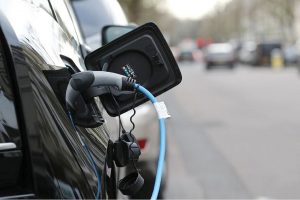
EV adoption growing, but analysts warn of limits to PHL market size
THE adoption of electric vehicles (EV) is growing with the launch of more models onto the market, the industry association said, though analysts fear the market will largely consist of high-end buyers.
“The EV industry is continuously growing with a lot of players are launching their different models that would suit to the needs of the consumer, from small cars to Big SUVs, from utilities to trucks and from e-scooters to e-big bikes,” Electric Vehicle Association of the Philippines President Edmund A. Araga said in a Viber message.
Citing the Land Transportation Office, Mr. Araga said EV registrations rose more than 15% in early 2023, with Mr. Araga expecting 2024 registrations to surpass 2023 levels.
According to the Comprehensive Roadmap for the Electric Vehicle Industry (CREVI), the Department of Energy (DoE) aims to raise the share of EVs in the Philippines to 10%, or in excess of the 5% required by Republic Act No. 11697, or the Electric Vehicle Industry Development Act.
By 2028, the DoE wants about 2.45 million EVs on the road, including cars, tricycles, motorcycles, and buses, with an installation target of 65,000 EV charging stations.
“While we are slower than other ASEAN countries, we are (focusing on) the implementation of RA 11697… to raise confidence in the industry among potential investors and consumers,” he said.
As of January, Energy Secretary Raphael P.M. Lotilla said there were 194 battery EVs, 19 plug-in hybrid EVs, 30 hybrid EVs, and 32 light EVs registered, while 96 commercial EV charging stations had been deployed as of December last year.
Transport analyst Rene S. Santiago said even if the Philippines were to have a 100% EV fleet, “the global needle would hardly move.”
“The main challenges is high cost of EV… majority of Filipinos cannot afford ICE (internal combustion engine) cars — much less, EV cars,” he said.
“The current mainstream product lineup (consists of) cars, which only the wealthy can afford,” he added.
Terry L. Ridon, a public investment analyst said that despite the “decreasing” prices of EVs, these will still be limited to “the upper end of the market due to its relatively higher prices compared to its (ICE) counterparts.”
“The infrastructure for EVs is also severely limited, as charging stations are limited and household charging is limited to those with actual garages. Condominium dwellers, even those with relatively higher incomes, do not have access to household charging stations,” he said.
The Energy Utilization Management Bureau (EUMB) said that the cost, availability, and access to EV charging need to be addressed.
“These are critical areas that require concerted efforts from both the government and private sectors, as outlined in the CREVI. At the end of the day, we want electric and social mobility for all Filipinos,” the EUMB said in a Viber response to a BusinessWorld query. — Sheldeen Joy Talavera



